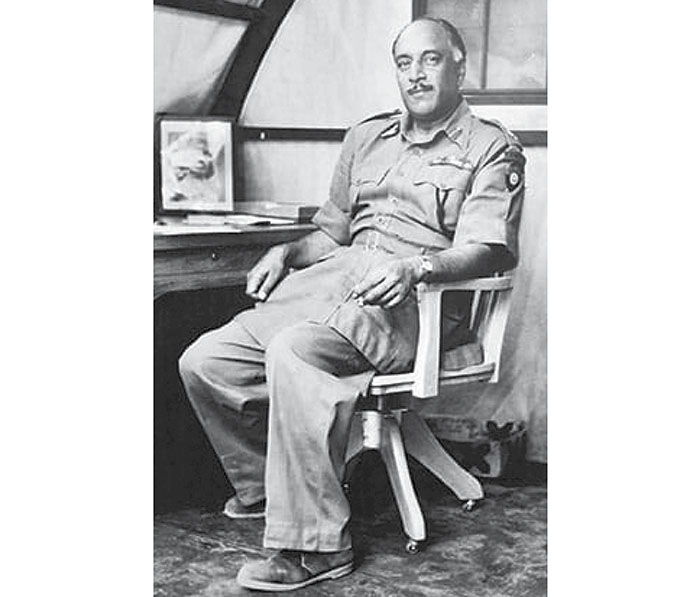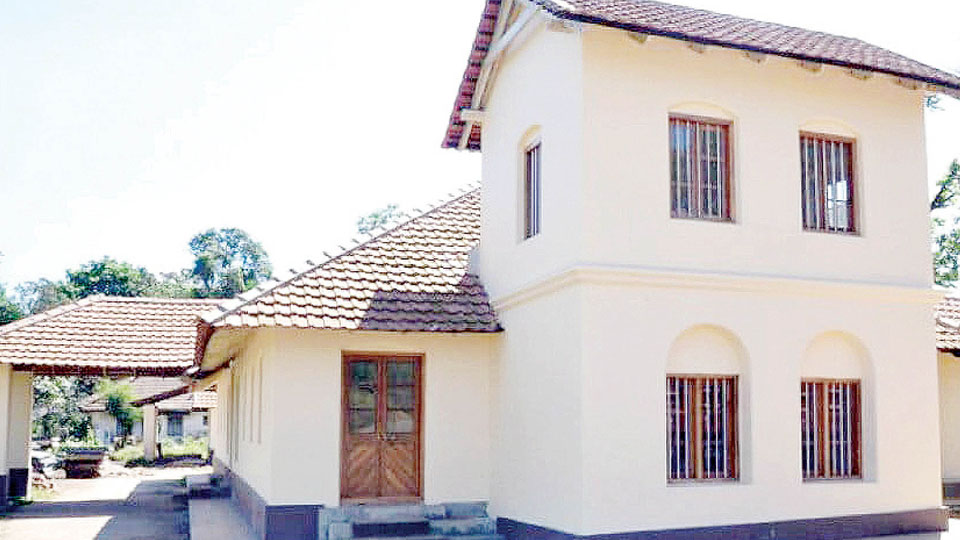[Continued from yesterday]
General K.S. Thimayya’s daughter Kongetira Mireille Chengappa had died a few days ago and it was very thoughtful of the curator to have displayed a small board inside by way of paying tribute .
Kaveri Ponnappa is the author of a scholarly, research-based book “The Vanishing Kodavas.” I was happy to see two photo images from the book with credit-line being displayed. Well, if the native Kodavas vanish from Kodagu, there will be no Kodagu. When the gold loses its lustre, can it be called gold? Kodagu without Kodavas, cannot be called Kodagu. You may call it by any other name. Perish the thought.
As if to emphasise these thoughts, Kodava identity with Kodagu the land and to affirm the rights of Kodavas on this little-land of hills and vales, there is on display a poem in Kannada written by Panje Mangesh Rao.
ಎಲ್ಲಿ ಭೂರಮೆ ದೇವ ಸನ್ನಿಧಿ ಬಯಸಿ ಬಿಮ್ಮನೆ ಬಂದಳೋ..!
ಎಲ್ಲಿ ಮೋಹನ ಗಿರಿಯ ಬೆರಗಿನ ರೂಪಿನಿಂದಲಿ ನಿಂದಳೋ..!
ಎಲ್ಲಿ ಮುಗಿಲಲಿ ಮಿಂಚಿನೋಲ್ ಕಾವೇರಿ ಹೊಳೆ ಹೊಳೆ ಹೊಳೆವಳೋ..!
ಎಲ್ಲಿ ನೆಲವನು ತಣಿಸಿ ಜನಮನ ಹೊಲದ ಕಳೆಕಳೆ ಕಳೆವಳೋ..!
ಅಲ್ಲೆ ಆ ಕಡೆ ನೋಡಲಾ..!
ಅಲ್ಲೆ ಕೊಡಗರ ನಾಡಲಾ..!
ಅಲ್ಲೆ ಕೊಡವರ ಬೀಡಲಾ..!
— ಪಂಜೆ ಮಂಗೇಶರಾಯರು
Be that as it may, Kaveri Ponnappa’s apprehension about the survival of this small Kodava community apart, there was a framed text titled ‘My Roots’ where Gen. K.S. Thimayya speaks in first person singular of a legend.
Legend has it that when these Kodavas entered this land a huge apparition of River Goddess Kaveri appeared before them and asked them to go back. But these Kodavas, promised to care for the land of the apparition Kaveri and make it rich. So mother Kaveri permitted them to stay. So Kodavas have a promise to keep and not do the vanishing act!

One of the most important items on display was the Farewell Address presented to the then Major General K.S. Thimayya by the people of Jammu and Kashmir State and signed by Sheikh Mohammad Abdullah, Prime Minister at Srinagar on 17.4.1950. The opening sentence says it all:
“In bidding farewell to you General, we are burdened with the weight of friendship and comradeship which has grown and flourished between you as the leader of the Indian Army in Kashmir and the people of Kashmir during these last two years.”
The war was described as ‘a fanatical war.’ He was described as General, leader, friend of the people, comrade and Timmy. “To the people of Gurez, Teetwal, Ladakh, Kargil and Leh you are the liberator, the hero.” And more.
“How can we bid you farewell when your name to the memory of your work is preserved in our villages and hamlets for all times to come?”
What more testimony is needed for General’s accomplishment in Jammu and Kashmir? Probably ‘K’ problem could have been solved if only Nehru and his advisers had entrusted the job to Gen. K.S. Thimayya to negotiate with Sheikh Abdullah. The Farewell Address calls him as AWAMI GENERAL, the People’s General. After all, you can negotiate only with people whom you trust.
Such a great soldier, a blue-eyed boy of Nehru, could not carry on his job as the Chief of Army Staff for the good of his country because of the Defence Minister Krishna Menon and had to submit his resignation. A case of the Biblical saying that ‘no prophet is honoured in his own land.’ However, Nehru persuaded him to withdraw his resignation. So far so good, he retired in 1961 and was heading the UN Peace Keeping Force in Cyprus as Commander where he died on December 18, 1965. His body was brought to Bengaluru and rather curiously buried like a commoner at the Wilson Garden burial ground in Bengaluru, some say, as per the wishes of his family members.
However, many admirers of General Thimayya were not happy about the graveyard where he was buried. Many Army compatriots of Gen. Thimayya, including World War II veteran Dr. Kandanda K. Kuttappa, who died on Jan. 23, 2023 at the age of 97, on finding the Wilson Garden burial ground overcrowded and used by undesirable elements for their nefarious activities, requested the Army authorities to shift the General’s body to a suitable place.
The Army authorities accordingly decided to shift the body to the Army Service Corps (ASC) Centre in Bengaluru with the consent of the late General’s daughter Mrs. Kongetira Mireille Chengappa. The body was exhumed from the Wilson Garden burial ground on Dec. 18, 1997, 32 years after his death and buried at the ASC Centre in Bengaluru. According to press reports, the entire operation was kept secret with only the General’s family members and a handful of senior Army Officers knowing about the new burial at the ASC Centre.
As I was walking out of the main gate, I met a retired soldier working at the Museum who reaffirmed what was displayed at the Museum saying that this Museum would not have happened but for the initiative taken by Lt. Gen. (Retd.) B.C. Nanda (now no more) and Major B.A. Nanjappa, the force behind the Museum.
Truly it is said, a soldier never dies, he simply fades away. Gen. K.S. Thimayya too might have faded away from our midst but his memory will continue to linger because of the Museum.
Jai Hind
e-mail: [email protected]








Recent Comments